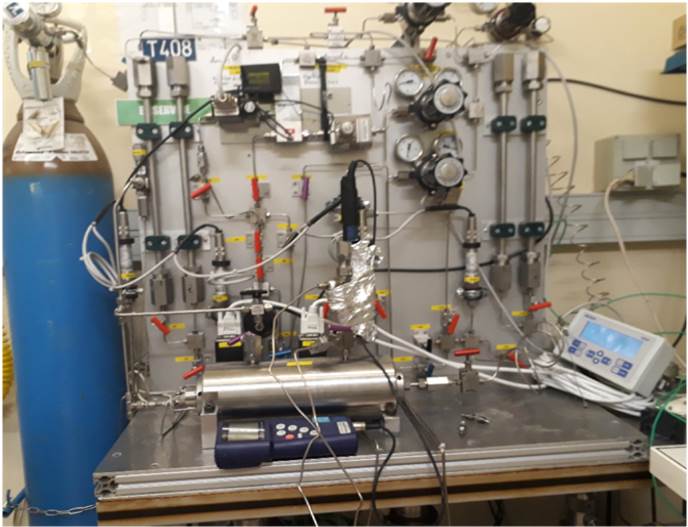Low permeability geological layers, already known within the context of oil exploration, are once again becoming a focus of interest for energy (compressed air), gas (CO2, H2, CH4) and waste storage. Their integrity is fundamental to their roles as both cap rock and host rock. All the retention, trapping and transport mechanisms within these rocks are reflected in two petrophysical properties that it is important to determine: permeability and porosity(1).
Several methods exist to determine the permeability _ by definition very low _ of these media and IFPEN is equipped with high-performance experimental set-ups to do so. However, the impact of adsorption on transport mechanisms within them is still poorly understood and difficult to measure, despite its significance. This is because if a chemical species is adsorbed in a rock’s porous network, this limits the network available for flow. This is known as effective flow porosity and/or kinematic porosity.
A new G-KwAD experimental methodology, coupling permeability measurements with a tracing experiment, was recently developed(2) making it possible, by means of a kinematic porosity measurement experiment with gas, to determine, for a single, ultra-low-permeability sample:
• not only its permeability k and its kinematic porosity ωca,
• but also its adsorption capacity (in g/kg of rock), which depends on pressure conditions and the concentration of the species injected.

For several of the applications mentioned above, the G-KwAD method represents significant progress: it makes it possible to easily access the values of key properties for numerical modeling of geological storage site longevity and safety.
a - Which takes adsorption into account.
(1) P.-F. Boulin, P. Bretonnier, N. Gland, J.-M. Lombard. Oil & Gas Science and Technology – IFP Energies nouvelles journal, 3, issue 67 (2012), 387-401
(2) G. Berthe, F. Martin, F. Al Sahyouni. Patent FR1857508, 2018
Scientific contact: guillaume.berthe@ifpen.fr





